There are few indications of natural rhythm in our urban forms. The modern city is a place
where time is read from the face of a clock, not natural cues. Days and seasons are counted
along a single thread. They are not perceived as part of a deep tapestry of rhythms.
Ralph Knowles, Sun, Rhythm, Form
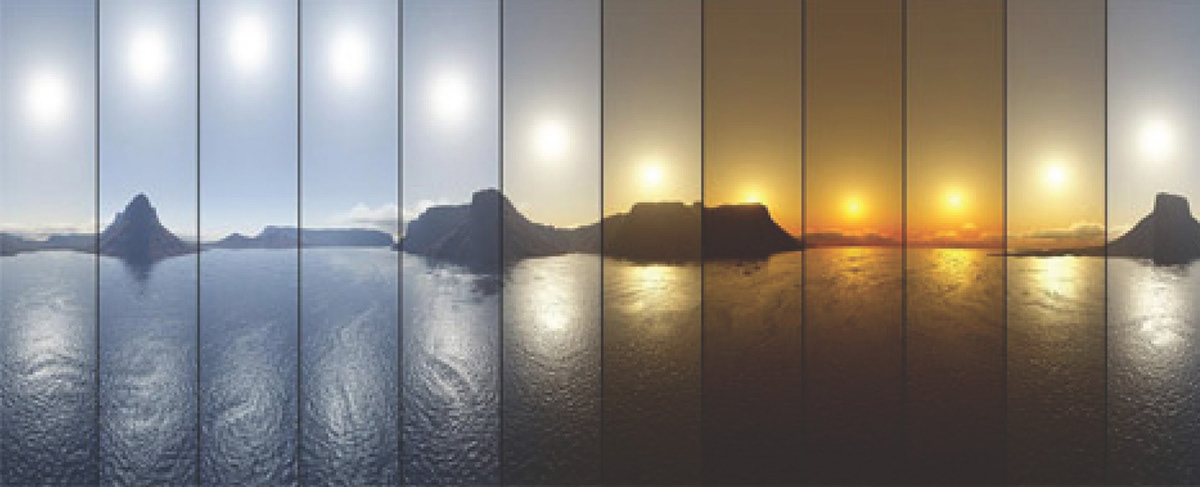
http://visuallypoetic.wordpress.com/
Concept
Inspired by the cyclical movement of the sun, the design I developed is a loop curtain with two layers of fabric passing over the window at all times. The fabric transitions from almost opaque to transparent with half the loop opaque and half transparent, alllowing light to be both blocked out and let in following natural light cycles. This concept developed from searching for a way to block light pollution at night, especially in urban environments, while allowing morning light to pass through, so the user can sleep and wake naturally.
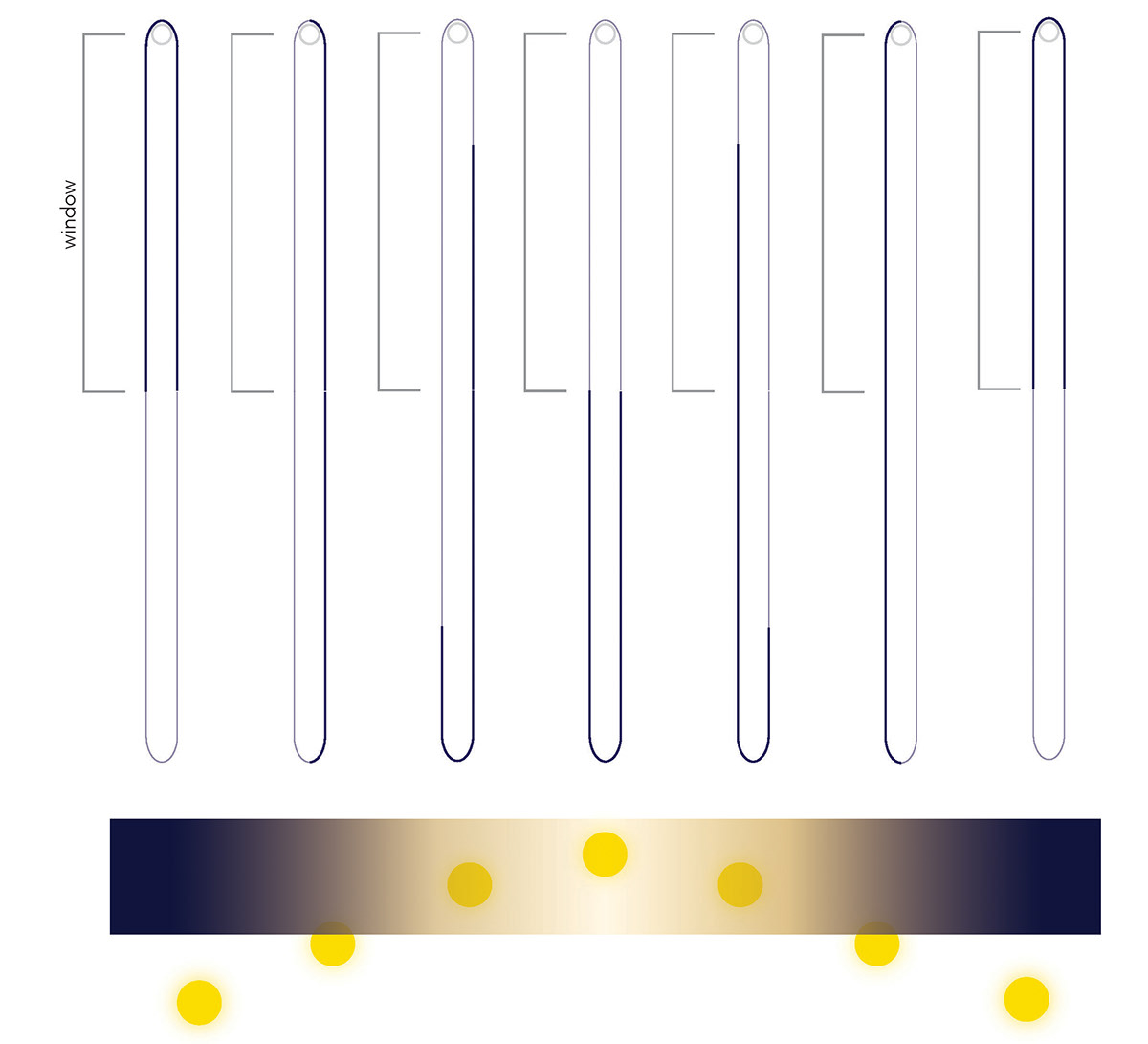
Arduino Controlled Movement
The curtain rod is powered by a small motor linked to an arduino. The Arduino tells the motor when to turn on and off to make the transitions happen almost without notice, although the change in the light becomes evident over time. The curtain cycles very slowly, mimicking the sun's movement.
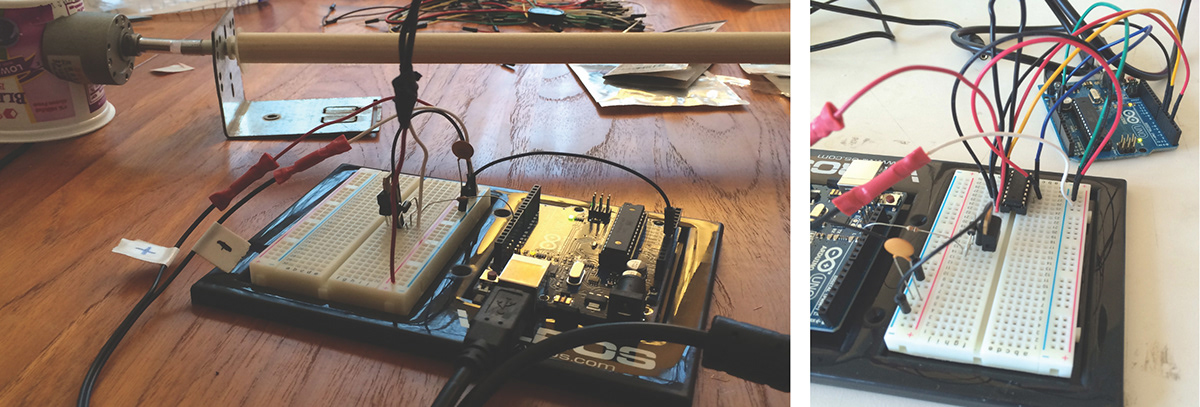
Textile Creation
I created the fabric by using the devoré or burnout technique. I used this technique to create a textile that transitions from opaque to translucent in the same piece of fabric. The result is as if some of the fabric has been decayed to gradually let more light pass through.
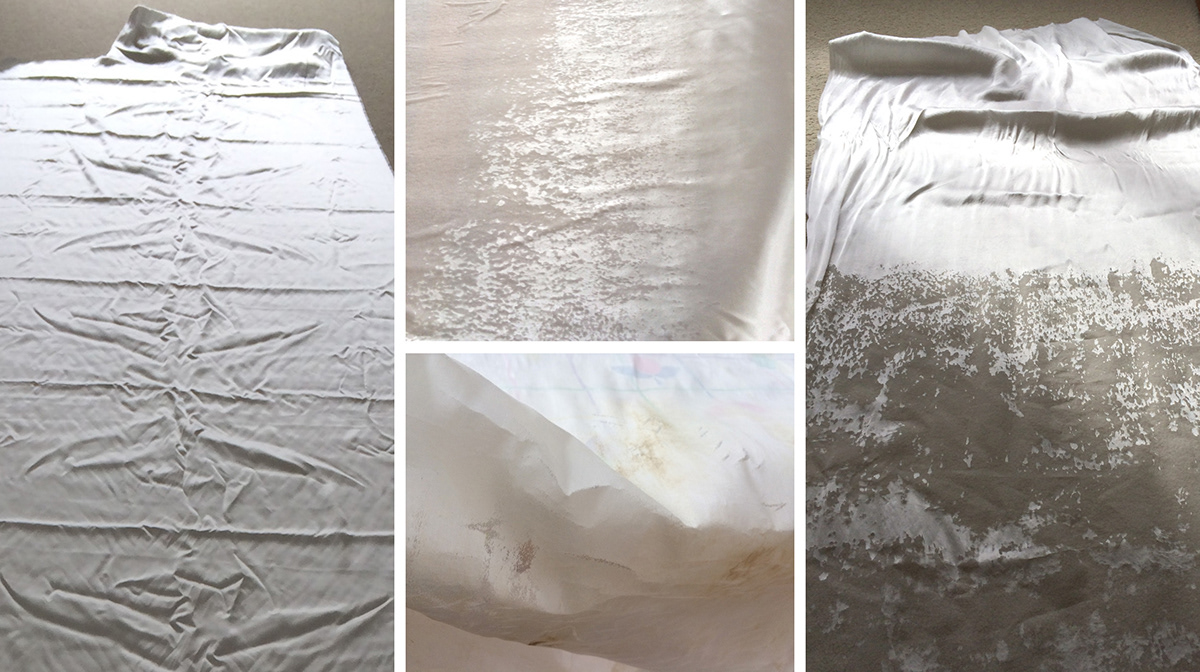
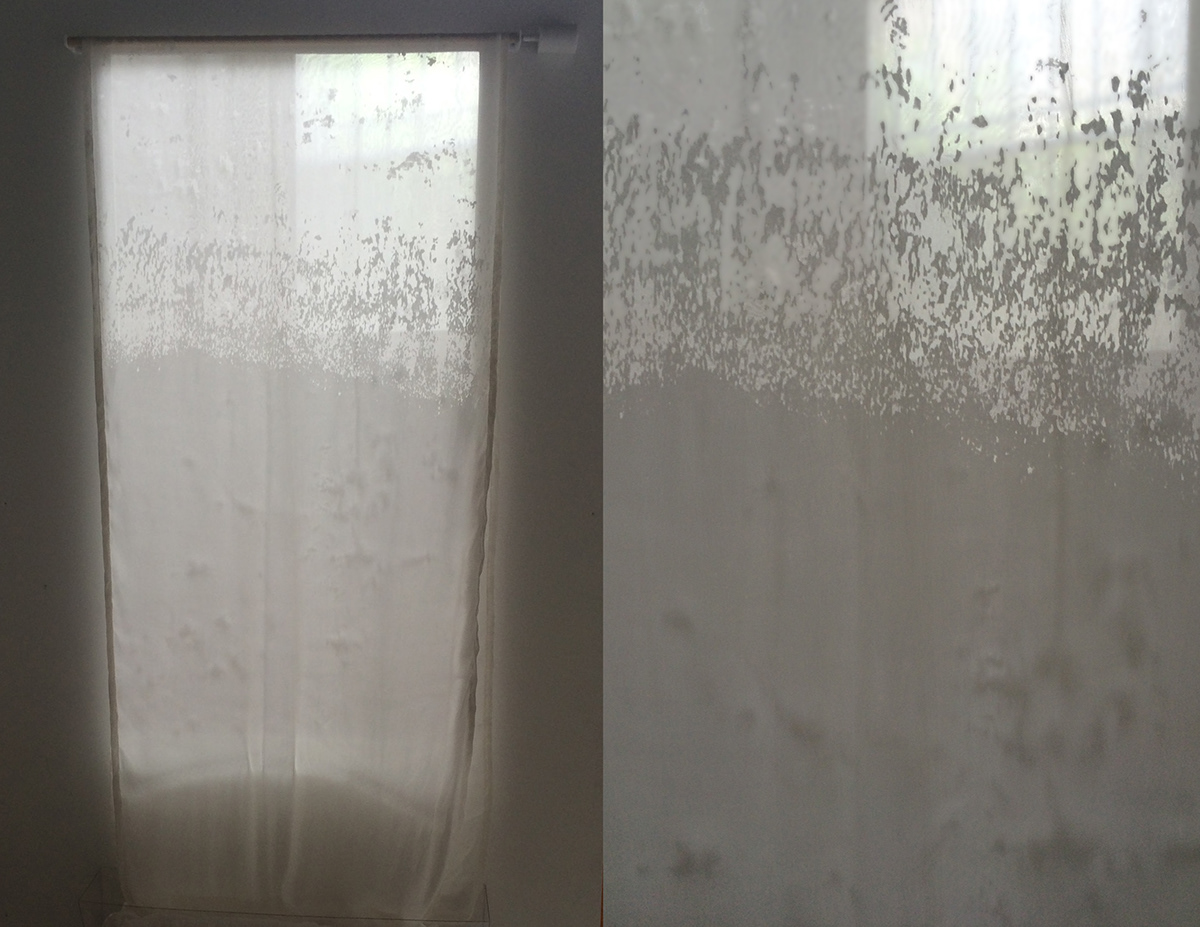
Final Design
With this circular curtain that follows the shifting sun, a sense of change and natural time can be intuitively kept in the interior. The position of the curtain itself provides clues to the movement of natural light in the exterior.
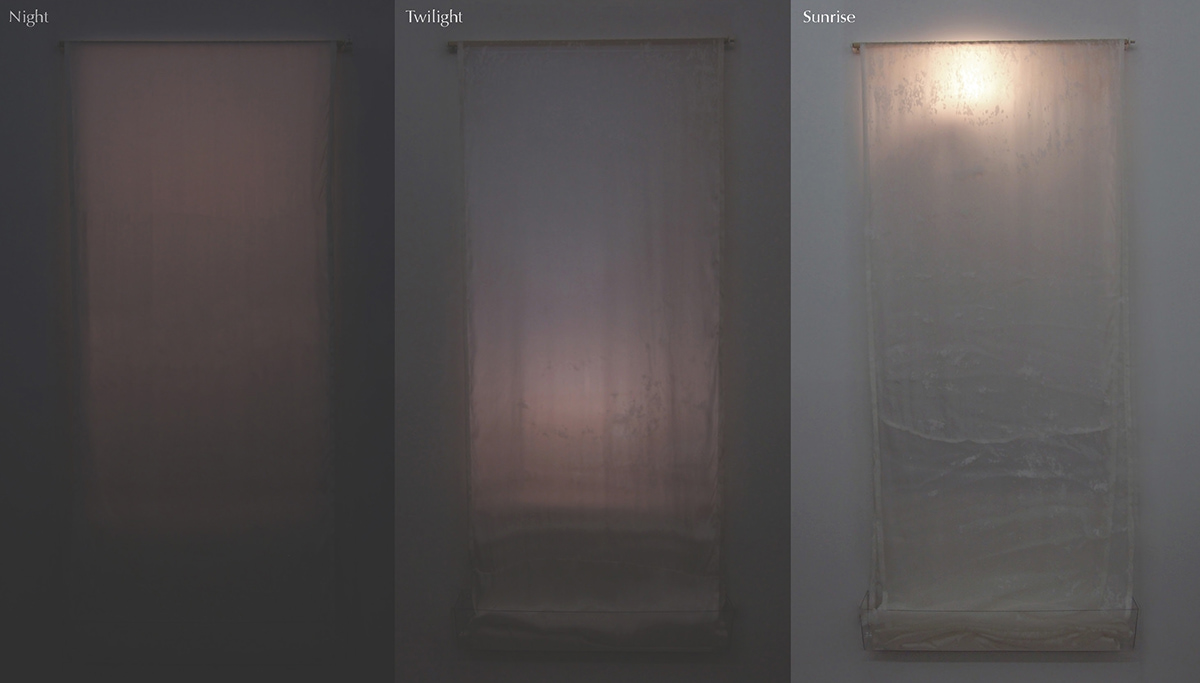
In the nighttime state, two layers of opaque fabric cover the window, allowing you to sleep in total darkness. As dawn approaches, the curtain moves so one almost opaque layer and one translucent layer overlap, letting a little light through. Then, the curtain moves through sunrise, where the top of the window is covered by two transparent layers and the bottom is still in the twilight state.

As morning progresses, more light is allowed to enter through the expanding transparent section of the curtain. The fabric loop continues to move into the daytime state where the window is covered by two transparent layers and bright sunlight can enter the space. As sunset approaches, the opaque layer begins to rise, covering some of the window until eventually it is fully twilight again. The two opaque layers begin to overtake the window when night returns.

